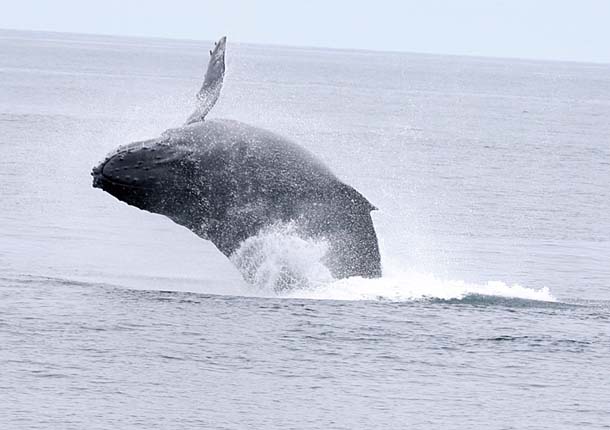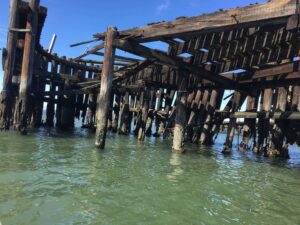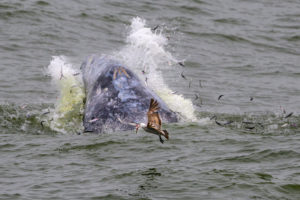The first thing we heard was the exhalation of the animal,” says marine ecologist Kirsten Lindquist about the blue whale that surfaced close to R/V Fulmar during a research trip in late July. The trip was run by ACCESS, Applied California Current Ecosystem Studies, a collaborative research project of PRBO Conservation Science and two of the region’s three national marine sanctuaries, Cordell Bank and Gulf of the Farallones. ACCESS researchers go out on surveys three to five times a year, providing data that can inform oil spill response and reduce the number of whales struck by ships.
“It was fun to have the captain say, ‘Let’s give this animal some space,’” says Lindquist as she recreates the moment when the steel-blue back of a 100-foot-long whale emerged close to shore and inhaled with the “fluty deep breath of an organ.” While it isn’t unusual to see blue whales in July, it is unusual to see them near Point Reyes, where the ACCESS crew saw this one and others that came so close they had to stop the engine.
This year (2012) in the Cordell and Farallon sanctuaries, as well as in Monterey Bay, scientists and tour boat operators reported earlier-than-usual sightings of blue and humpback whales, some of which came closer to shore than expected. Why? As the krill go, so go blue whales that specialize in eating these shrimplike crustaceans. But it wasn’t an “off-the-chart” year for krill like 2010, says Jaime Jahncke, lead investigator for ACCESS. That year, ACCESS counted four times more humpbacks than in any year from 2004 to 2008. Krill production was depressed from 2004 to 2007, he says, and missing from the area entirely in the 2005–2006 season. The krill have since recovered.
There’s more at play than whales and krill, however. “We saw a lot of productivity out there, but also a lot of weirdness,” says National Marine Fisheries Service’s John Field, who conducts a mid-water trawl survey in May and June. The chief weirdness was an enormous number of salps, gelatinous zooplankton about an inch long. Salps compete with krill for food, so it’s possible that the salps pushed the krill closer to shore than usual, and the blue whales simply followed their prey.
Conditions off our coast have shifted again and will affect more than whales. An El Niño cycle has begun and will continue to strengthen, according to government forecasts. But El Niño is an unruly child, says Jahncke. El Niño conditions in 1982–1983 and 1998–1999 resulted in low productivity on the Farallon Islands, but El Niño–like conditions in 2010 brought an explosion of krill and the best year ever for Cassin’s auklets (more on auklets at the Farallones). So all we can do is wait and see — and enjoy the ever-changing show.





